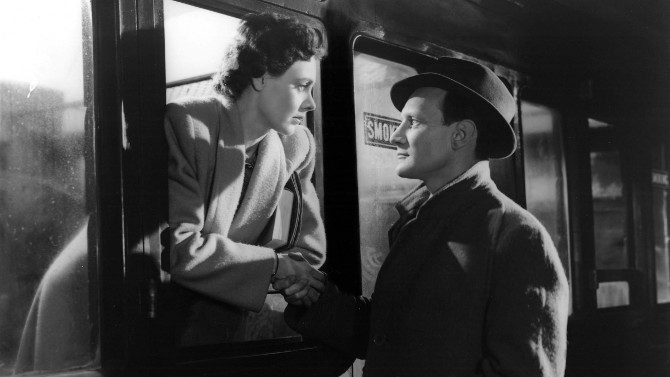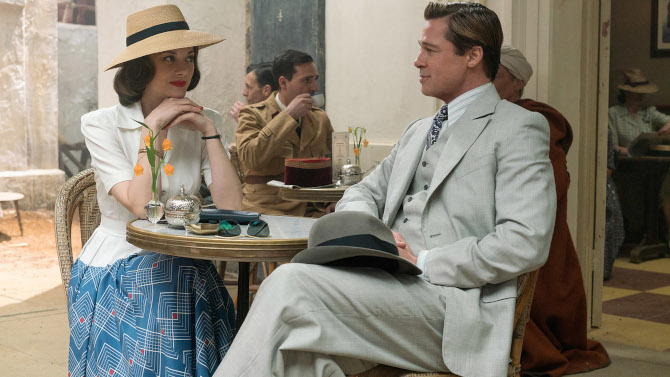
Déjà vu Dalliance
Channeling the mesmeric movies churned out by the studio system back in the 1930s and 40s, Allied (2016), directed by Robert Zemeckis, channels the likes of Morocco, Casablanca, Across the Pacific, Gilda, To Have and Have Not, and numerous others – attempting to find a spark from the classic themes of melodrama, romance, suspense and the epic nature of the annals of the cinematic past, with quite successful results. Set the year Casablanca and Across the Pacific were released – 1942, the story in fact starts in Morocco, with recently parachuted in Canadian spy Max Vatan (Brad Pitt) meeting up with another undercover agent, Marianne Beauséjour (Marion Cotillard), who will be pretending to be his wife.
-
Star Pick with Keir Dullea
 Train in VainBrief EncounterOctober 18, 2016
Train in VainBrief EncounterOctober 18, 2016Whilst attending Trekonderoga, the Ticonderoga comic convention that is all things Star Trek, on August 13th, 2016, I was fortunate enough to be able to interview Keir Dullea. Best known for taking on the starring role of Dr. Dave Bowman in Stanley Kubrick’s iconic space epic 2001: A Space Odyssey – he reprised the character for the film’s 1984 sequel 2010: The Year We Made Contact. Dullea has played a variety of intriguing roles over his six plus decades in the industry, getting his first lead role in 1962's David and Lisa, the actor then went on to star in 1964's The Thin Red Line, Otto Preminger’s 1965 mystery Bunny Lake is Missing, 1974's Black Christmas (often considered to be the genesis of the slasher horror film genre), and Robert De Niro’s 2006 flick The Good Shepherd, to name but a few of his film credits. The man actually highlighted a small Canadian film that he made back in 1973, titled Paperback Hero (also known as Last of the Big Guns), as being the favourite film he has worked on to this point.
-
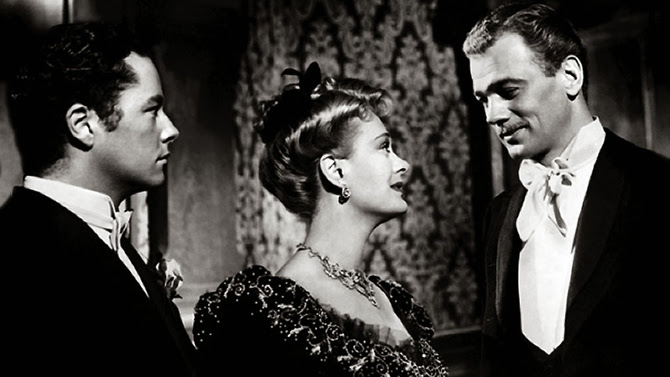
All That Glitters is Not Gold
The Magnificent AmbersonsSeptember 30, 2016Depicting the slow decline of a wealthy family, Orson Welles’ follow up picture to Citizen Kane, 1942's The Magnificent Ambersons, provides us with a melancholic reflection on how the more simple life of the nineteenth century transitioned into a more hurried, less enjoyable one as the new century was ushered in. We are transported into the socialite world of the Ambersons, a well-to-do American family living in the then small city of Indianapolis. Residing in a gargantuan mansion, the family sit at the top of the food chain when it comes to the pecking order in the area. Welles provides the voice-over narration as he introduces us to the family, including Isabel (Dolores Costello), daughter of patriarch Major Amberson (Richard Bennett), a young lady who is being courted by the thoughtful Eugene Morgan (Joseph Cotten). After a disastrous attempt at performing a serenade for her, the romantic man is shunned by the young debutante – she sees his failure as an ominous sign.
-
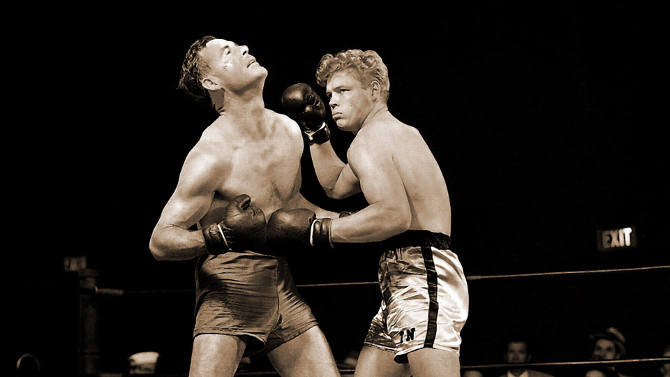
Ring of Lies
The Set-UpSeptember 24, 2016Containing two of the big time film noir players, 1949's The Set-Up follows down and out boxer Stoker Thompson (Robert Ryan) as he prepares for his next bout. Ryan, who starred in 15 film noirs throughout his career, perfectly encapsulates the aging veteran, with his domineering height, craggy athletic look, and pained eyes that show the seemingly endless struggles he has had in the ring. His long suffering wife, Julie, is played by Audrey Totter. The dame, who passed away back in 2013 at the age of 95, took on 14 very different roles in the bleak genre. The attractive blonde is less femme fatale in this one, this time showing her range as the pained woman who can no longer watch her husband take beatings night after night.
-
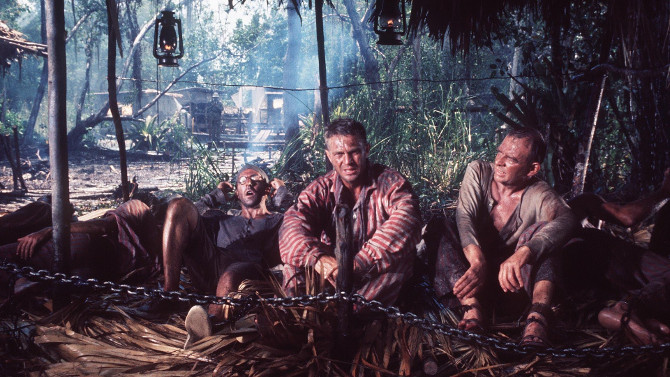
Prison Break, McQueen Style
PapillonAugust 21, 2016There are certain actors that have the ‘cool’ factor. Not the easiest thing to define, there is just something about their larger than life personas that attract us to them. One such actor is Steve McQueen. It seems that each role he chose further expanded his reign as a cool cat, with films like The Great Escape and Bullitt helping fuse together his characters with the real person – creating an image of a man’s man whose tall lean frame drove muscle cars through San Francisco during the week while escaping from Nazi concentration camps on the weekend. Another motion picture that epitomizes his persona is the 1973 prison drama Papillon. Based on the autobiography by French convict Henri Charrière, director Franklin J. Schaffner (Patton/Planet of the Apes) takes us on an epic ride as Charrière, whose moniker is Papillon (McQueen), as he has a vivid tattoo of a butterfly that can be found on the middle of his chest, is placed on a ship departing from France.
-
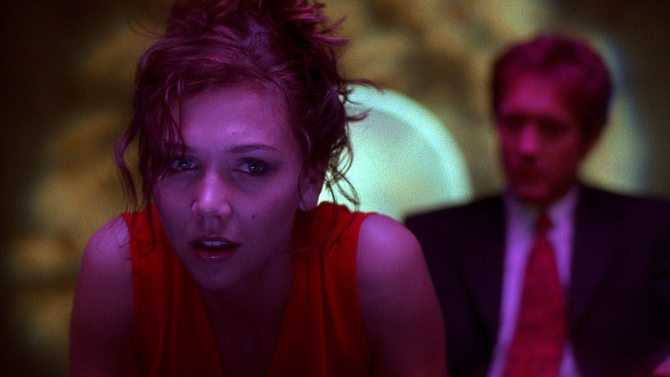
Law and Order
SecretaryAugust 7, 2016Much has been made of Fifty Shades of Grey. The phenomenon (be it the books or the film) has taken the world by storm, creating an ever-growing buzz around the subject of kinky sexual escapades. But, after watching the movie, I must say that it is a cold, clinical production that lacks nuance, emotion, heart, depth or eroticism. For a more engaging portrayal of the themes found in Fifty Shades, I would recommend turning to the 2002 motion picture Secretary. Following in the vein of other erotic flicks like 1972's Last Tango in Paris and 1986's 9½ Weeks (to name just two), director Steven Shainberg (who adapted Mary Gaitskill’s short story along with Erin Cressida Wilson) introduces us to our lead character: the shy, sensitive and socially uncomfortable Lee Holloway (Maggie Gyllenhaal). Dealing with many psychological issues, she is first seen leaving an institution after being caught causing herself harm.
-
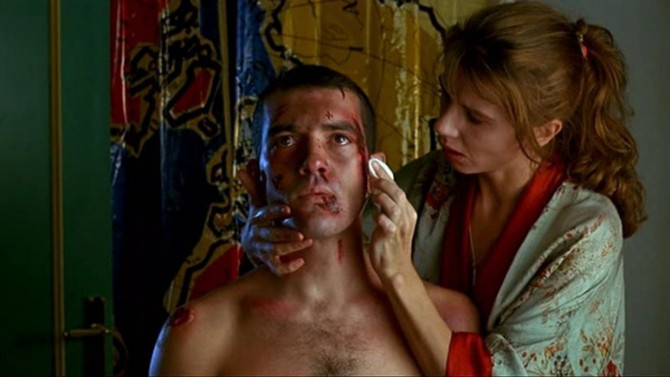
Fit to be Tied
Tie Me Up! Tie Me Down!August 5, 2016Dealing with the unnerving and dangerously disturbing topic of the Stockholm Syndrome, Pedro Almodóvar uses deft humour, rich engaging (as well as flawed) characters and a solid story to concoct one of the more unusual romances in film history. The title of said motion picture is Tie Me Up! Tie Me Down!, released in 1989 to much fanfare and equally as much controversy. The winner of several festival awards (as well as being lauded as a superb film in Spain), it received an X rating in the United States (equal to that of a hardcore pornography film) – with the MPAA disliking two scenes as well as the crime aspect of the story (which they thought could influence young males to commit kidnapping much like the main character). To paraphrase Almodóvar, he humourously exclaimed that he does not make movies expecting that the entire audience will be psychopaths. In the end, it was this movie that led the MPAA to create the new rating of NC-17, which still exists today, and if given, usually kills a movie’s box office chances much like the X rating.

